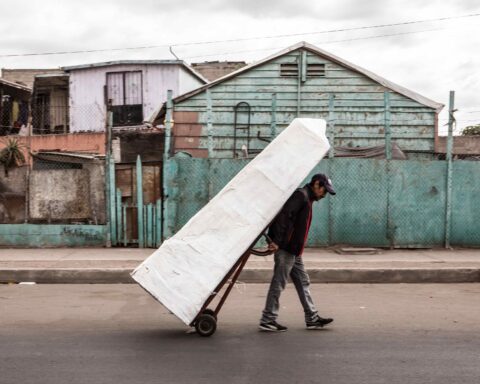Mohau Modisakeng is a contemporary artist, born in Soweto in 1986. He lives and works between Johannesburg and Cape Town. He completed his undergraduate degree at the Michaelis School of Fine Art, Cape Town in 2009 and worked towards his Master’s degree at the same institution. His work engages race, the militarization of society, and the deep divides of post-apartheid South Africa and the post-colonial continent. He interrogates the collective narratives that inform our experience of the world, in particular those that evoke the black body as a site of fragmentation and distortion. Mohau Modisakeng participated in the Venice Biennale in 2017, representing the South African pavilion, he has obtained numerous prizes and awards.
For Modisakeng, photography becomes the medium to flatten time, to connect the observer and the subject of the photo, dividing the moment and freezing it as it declared “a state of limbo situated between the horrors of our apartheid past and the ideals of the future which we have failed to obtain”, between the daily reality of the observer and that experienced by the South African people.
In his performance, the artist is in front of the camera staging the feelings he experienced, reenacted something very private and personal.
Prejudice against Apartheid and the history of colonialism exposed the collective history to a change, as if not to face reality, as if one did not want to give importance to history. So the artist tries to bring back to his works the harsh reality made of horror, destruction, violence, and pain. Very often dust resorts in the works, remembering men and children forced to work in mines.
“His images evoke the darkness and pollution of the mines that surround Johannesburg and the trauma they have wreaked on black bodies through the generations, with the striking figure of Modisakeng himself beaming brightly in the middle of it all.” Through his body the artist becomes the mediator of history, mourning’s story, expression of deep sorrow, he tells us through a thoughtful, profound gesture, a past still present, a wound not yet healed, of the differences to which we have not listened anymore.
In the works, we find symbols that have to do with the Zulu tradition (Modisakeng’s mother was Zulu), tribal customs and traditional beliefs, with the symbols of white capitalism, with the acts of violence that the population has suffered, the tiring and cruel working conditions. With his body, he described the reflection of loss, through personal experience and with the collective trauma of his people. The artist often wears black, mourning’s color, coal’s color, the color of absence par excellence, uploading the photo of expressive power, and emotional tension performances. In contrast, he wears white aprons, horse blinkers that allow you to look forward only, bowler hat and powder or white liquid, symbols of a not yet completely past, which has destroyed traditions, led to territorial divisions and much, much suffering.
Mohau is an incredible artist, he has a very high emotional charge. Each project differs from the other with the same expressive power, telling how often we have repeated the drama of a violated land, the suffering that millions of people have experienced under the aegis of capitalism and oppression.
Our interview focused on the figure of the artist, from the moment of creation to the ideals he pursues. The story of Modisakeng is really wide and deep, we have not been able to grasp everything but on this occasion, we want to emphasize and give space to the Black Lives Matter movement, remembering that we will be free from hatred when we understand that we depend on others in a relationship reciprocal of giving and having, without imposing dominion, but with the awareness that to live in peace, we must give peace, that to understand who we are we must understand each other. We must take care of individual and collective memory. Loving differences are the only way to restore order.
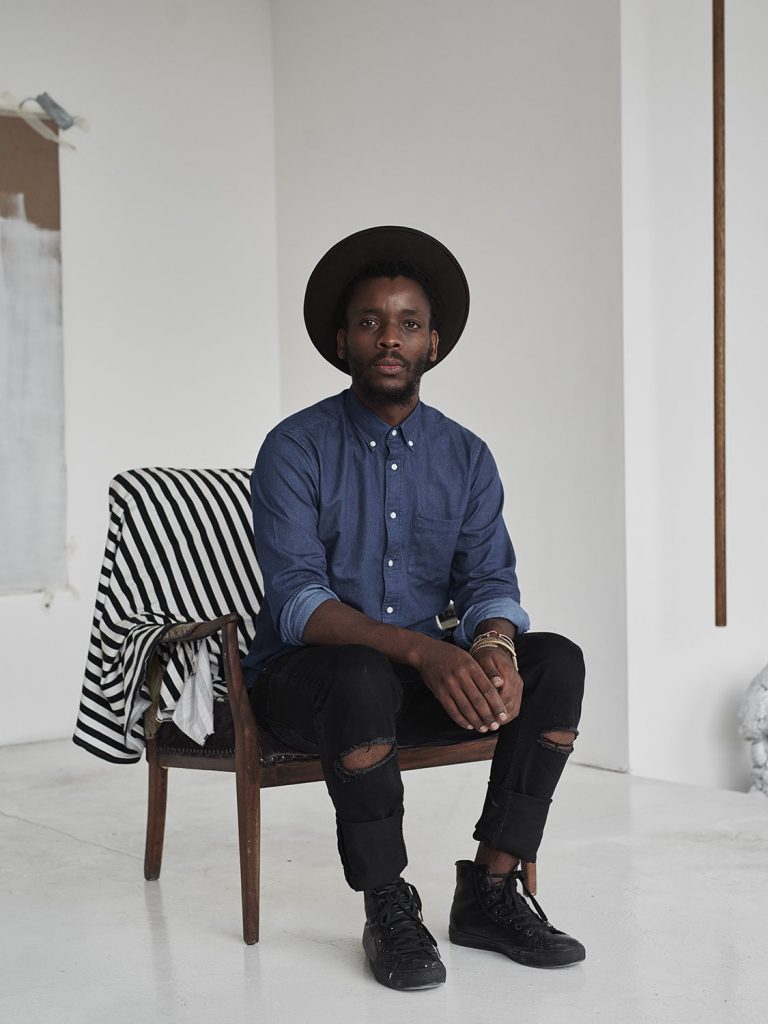
Marika Marchese: How does your artistic production take place?
Mohau Modisaken: All starts with an idea, the investigation, the trial, error, refinement, its preparation and opportunity.
Ma.Ma: How do you organize your work?
I organize it in terms of the different phrases that lead to a complete work, from conception to production and showcase.
Mo.Mo: Some of my projects take months of planning and only culminate in a series of fleeting performances for select audiences. So we document the work to be able to share with wider audiences elsewhere.
Ma.Ma: Where do you record your films?
Mo.Mo: I document a lot of my performance work, which has been showcased in different parts of the world. I often choose places that have a particular connection to the history of Africa and the black Diaspora in the19th century.
I’ve recorded in several historical landmarks in New York. I’ve also performed in Kalba, a coastal town on the coast of Oman, once a historic entry point for East African slaves. Recently I showcased a performance in an old shipyard in Helsingør Denmark. Places are as symbolic as languages, in that someone’s tongue can place them somewhere in the world. People are defined to a large extent by being born in a particular place in the world. The places we live our lives in often become significant markers of our identity. People belong somewhere, someplace. So yes, places are very symbolic.
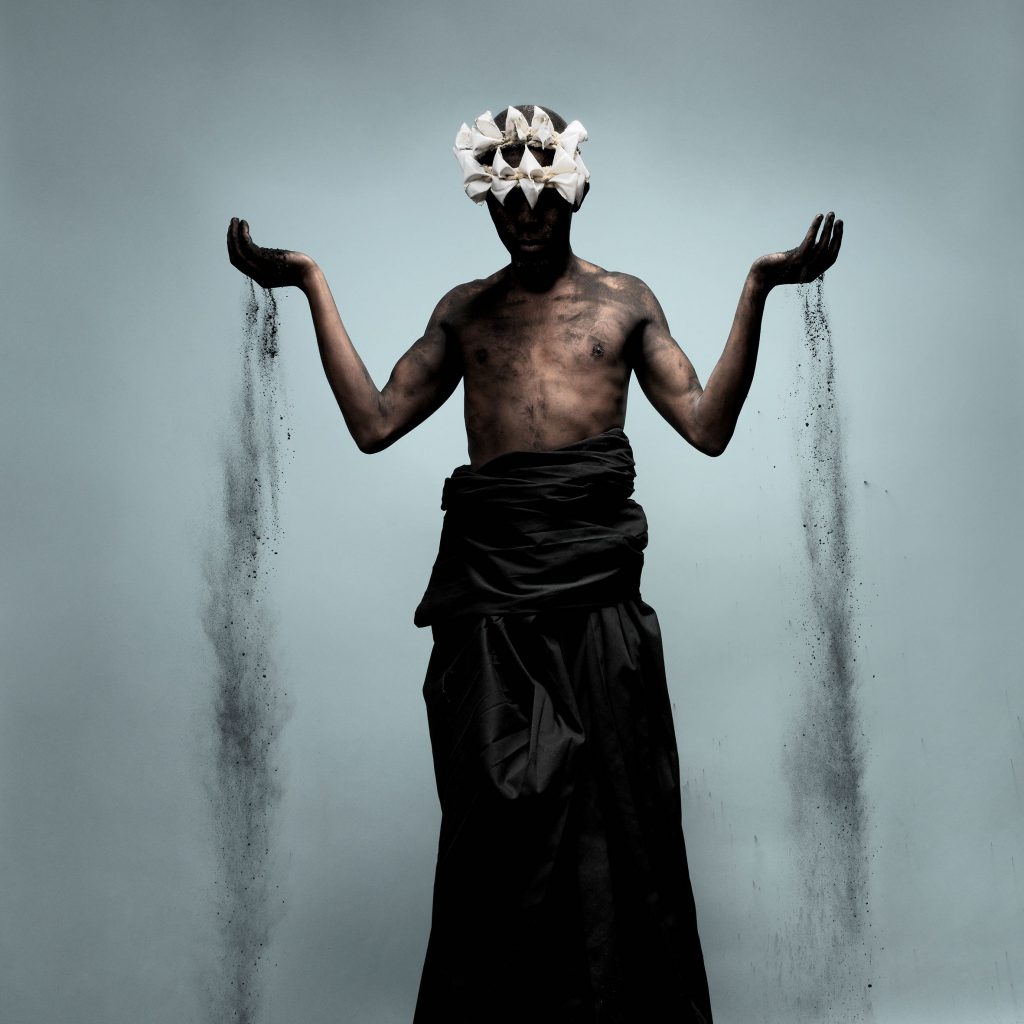
Diasec pigment print on platine fibre RAG – MATT Courtesy WHATIFTHEWORLD Gallery and the Artist
Ma.Ma: Are there any artists or directors you take inspiration from?
Mo.Mo: I admire a number of artists, each for a different reason. I am inspired by the work of South African sculptor Jane Alexander. The photographs of Bob Gosani, Ernest Cole are a constant reference point in my research, and the photographs of South African photographer Ntate Santu Mofokeng, particularly the series shot in the caves in a place called Motouleng.
I also love the film work of Isaac Julien and Steve McQueen.
Ma.Ma: What message would you like to give to the world in 2020?
Mo.Mo: There is a beauty in stillness and silence. When the world returns to a new normal, post contagion, it might have to reimagine a new way of life, with self, and others.
Ma.Ma: What do you wish for your land?
Mo.Mo: I wish for social justice and economic equality.
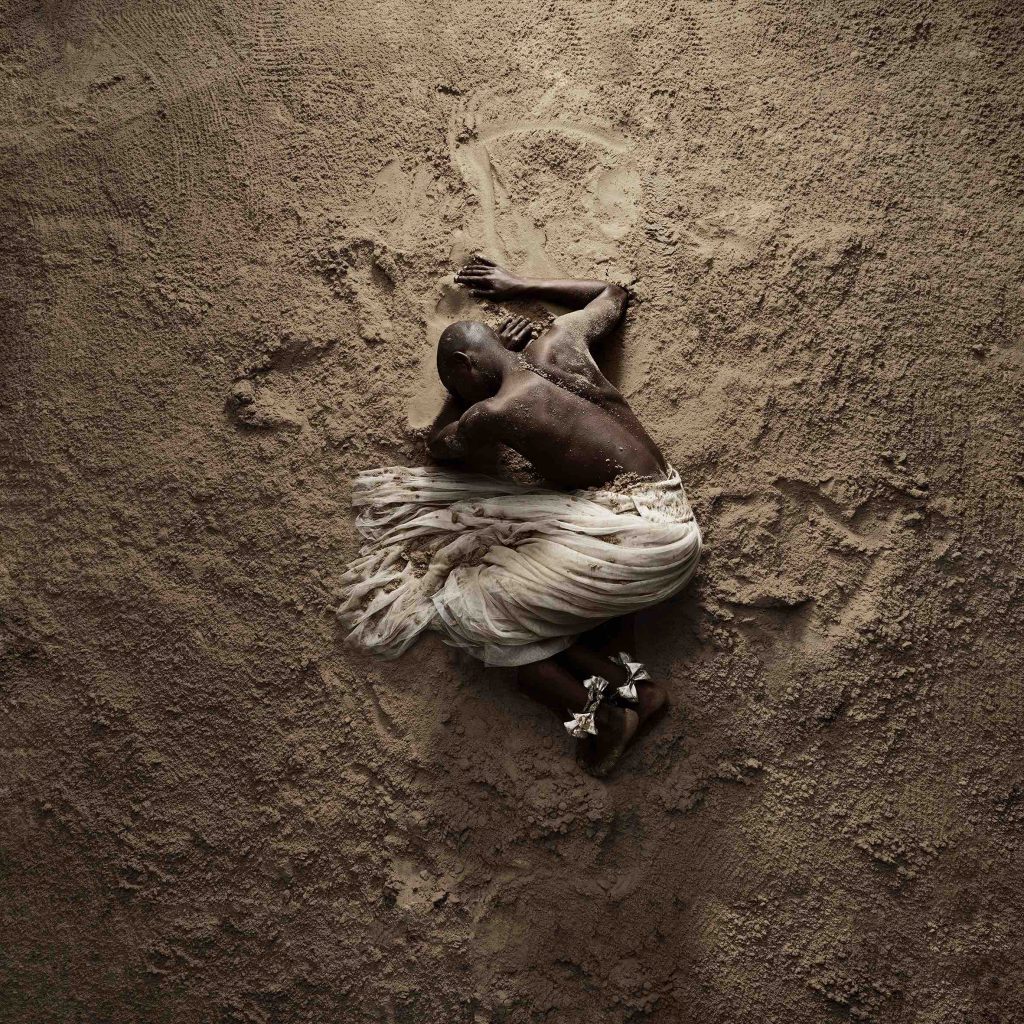
Mohau Modisakeng, Untitled (Zanj 5), 2019
Diasec pigment print on edition etching rag
Courtesy WHATIFTHEWORLD Gallery and the Artist
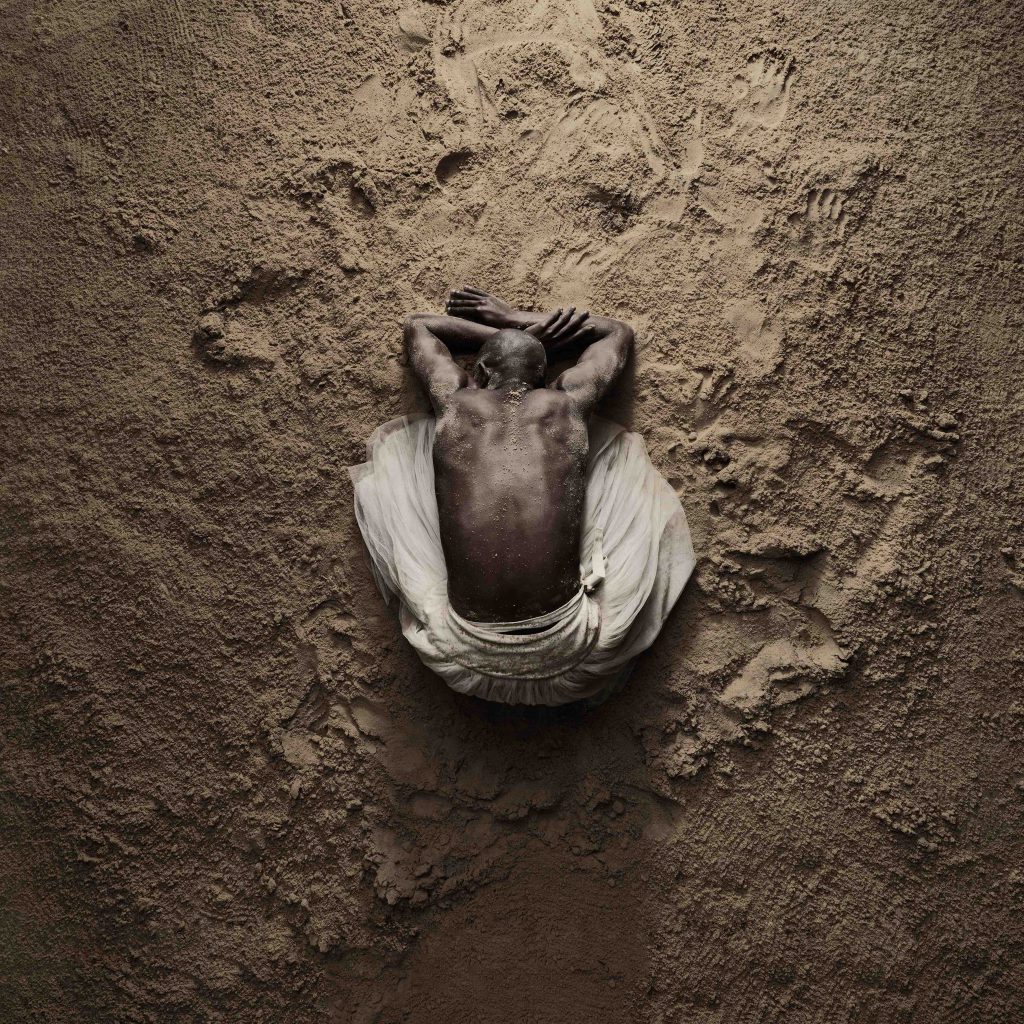
Mohau Modisakeng, Untitled (Zanj 6), 2019
Diasec pigment print on edition etching rag
Courtesy WHATIFTHEWORLD Gallery and the Artist
Ma.Ma: Is there a poem or a literary passage you are fond of?
Mo.Mo: A poem by this important South African poet Keorapatse Kgosietsile.
This is an extract from the poem “No serenity here”:
I fear the end of peace
and I wonder if
that is perhaps why
our memories of struggle
refuse to die
we are not strangers
to the end of peace
we have known women widowed
without any corpses of husbands
because the road to the mines
like the road to any war
is long and littered with casualties
even those who still walk and talk
We would like to thank the artist, Mohau Modisakeng and his team, in particular Scott Williams, for availability during these months of collaboration, and the WHATIFTHEWORLD gallery, for the concession of the images.
Courtesy WHATIFTHEWORLD Gallery and the Artist





